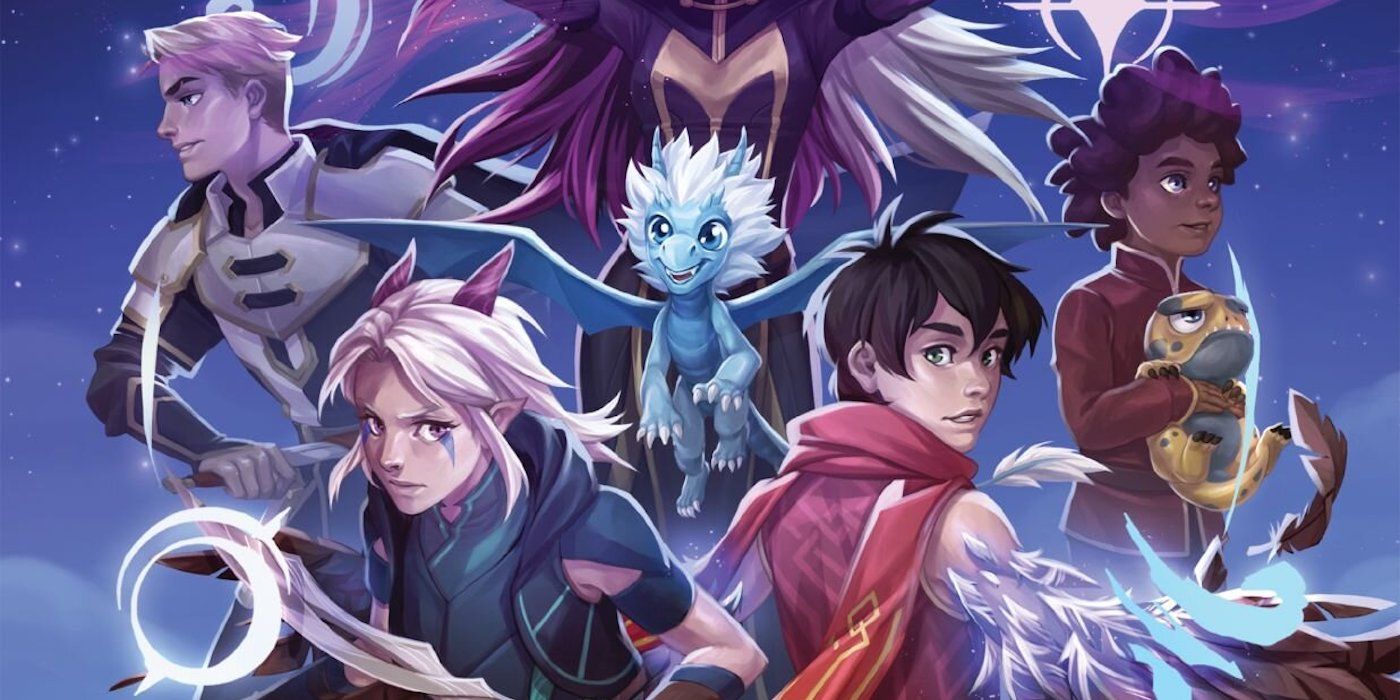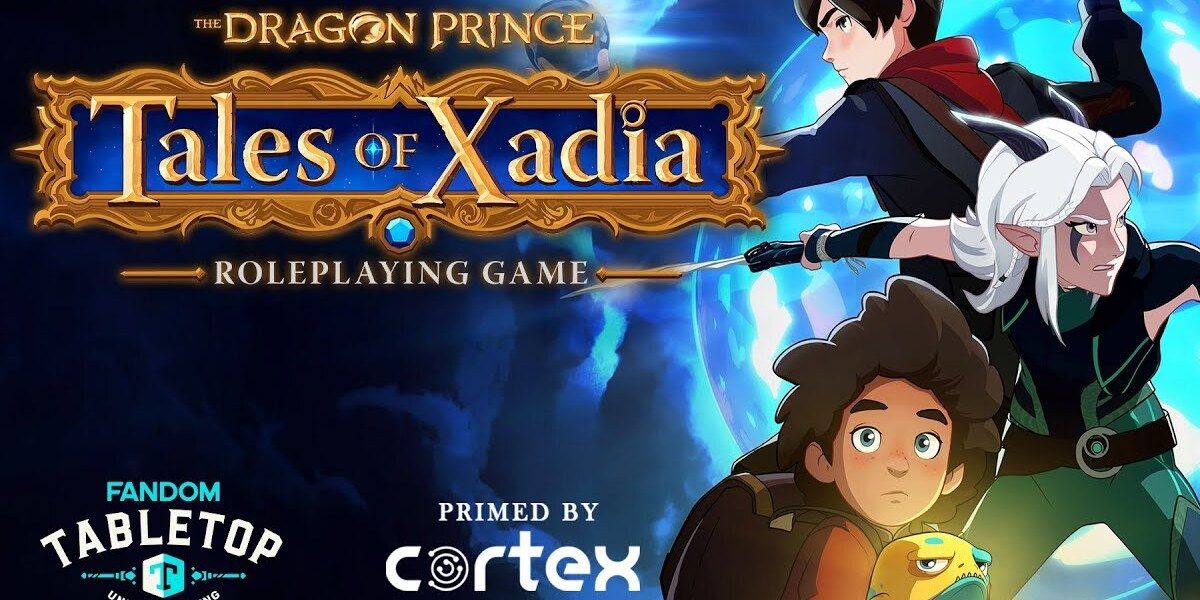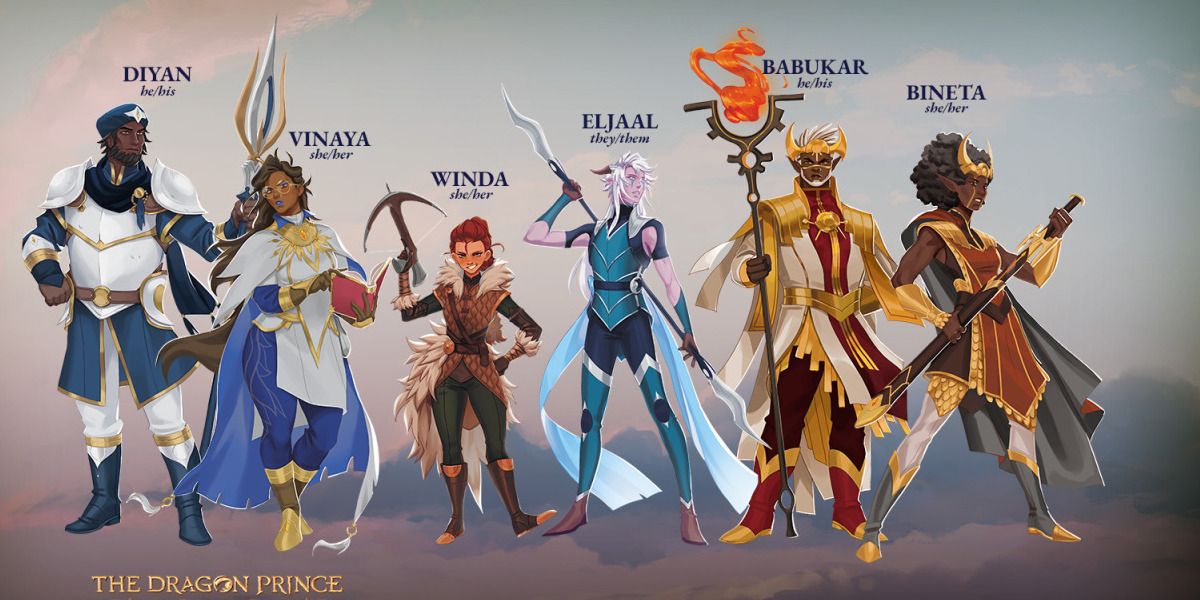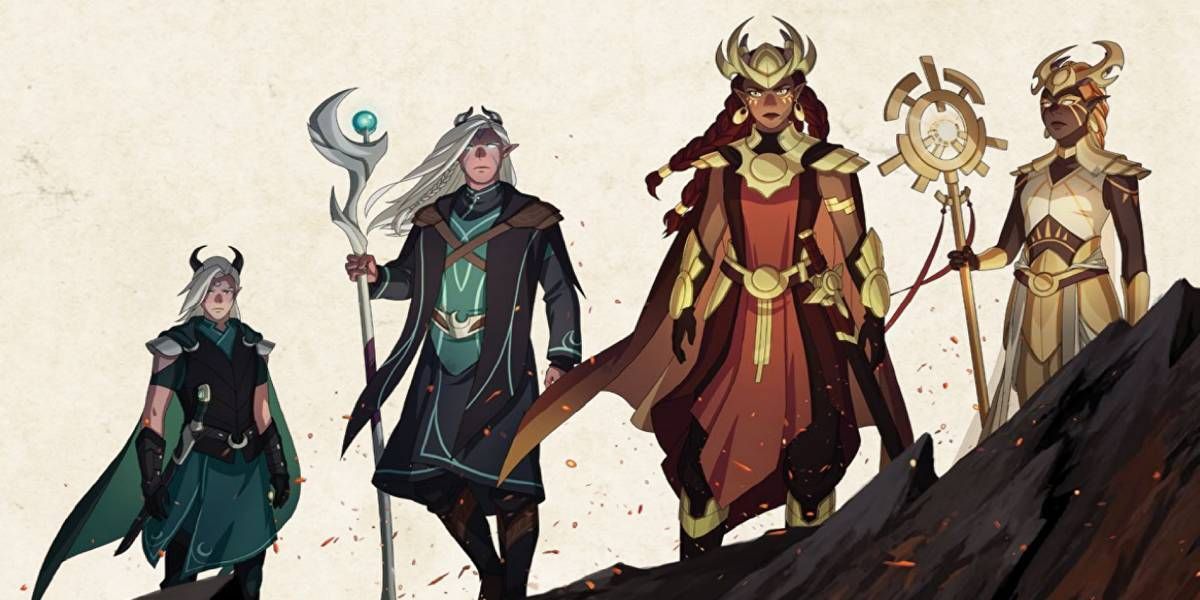One of Netflix's most beloved animated series is its epic fantasy show The Dragon Prince. Created by Aaron Ehasz and Justin Richmond through their production company Wonderstorm, the fantasy series has successfully branched out its world of rival kingdoms and monstrous beasts to prose, comic books, and miniature tabletop gaming. The Dragon Prince is now coming to tabletop roleplaying games with Tales of Xadia. Developed by Fandom Tabletop and running on the publisher's acclaimed Cortex system, the game introduces player characters that expand on the lore of The Dragon Prince's mythical continent that's complete with its own set of narrative adventures. Players also have the berth to create unique tales.
In a roundtable interview attended by CBR's Sam Stone, Ehasz, Richmond, Tales of Xadia creative director Cam Banks, narrative lead Dan Telfer, and community manager Mellie Doucette shared a playtest of the tabletop game. The team then answered questions about Tales of Xadia's development, collaborating with Wonderstorm studio, and its future.
Telfer confirmed that Tales of Xadia has two complete tales, along with its rules primer tutorial. "We wanted people to be able to play with this right away and get a sense of the show is being adapted for tabletop roleplaying," Telfer shared. He confirmed that a third tale will be included in the tabletop guidebook itself, giving those who purchase it an entirely new quest to play. Telfer observed they are hard at work on additional content for Tales of Xadia but there is no "publicly available plan" in regards to its release schedule.
Doucette hinted that there's some development for more "fun-size" quests under the banner "Fables of Xadia" for release sometime in Tales of Xadia's book publication. Those that preorder the book will receive additional information. Banks noted that Tales of Xadia was never seen as a "one-and-done" project. One especially noteworthy feature in Tales of Xadia is its emphasis on player characters evolving narratively and over the course of the story based on player input and quest outcome.
Banks observed that a game that revolved entirely around conventional fights and combat mastery didn't necessarily match up with the themes and tone of The Dragon Prince animated series. This was taken into consideration for Tales of Xadia's rules design, focusing on "conflicts that aren't necessarily physical battle-type conflicts," but instead matching the drive of character development from the show. "These were characters making extremely difficult choices based on what they felt was right and sometimes they didn't get what they wanted," Banks added. Telfer approached each tale and scene with dramatic storytelling in mind, with Tales of Xadia meant for players to feel like they are "immersing themselves in an episode of the show."
"This was really important to us, that we found a creative partnership really early and that we found a lot of alignment and that's partially because we saw this as an opportunity to bring canon world-building and storytelling in an engaging, interactive way," Ehasz explained in response to a question from CBR. "A lot of the original core of the stories were built together with the teams at Wonderstorm and making sure they were lined up with things happening in The Dragon Prince Universe and that it fits right in with the ongoing saga. On an ongoing basis, our writers and designers have worked with the creative designers on Tales of Xadia to make sure that world-building is aligned and moving in a great direction. When I say 'Make sure,' when you find that alignment early on, it's like the stuff both teams are building together is true and resonates on an ongoing basis and I think that's really true of this project. This world to jump into is a bigger, brighter Xadia than Justin and I had started with but we're lucky to have extra creative minds to build that out with us."
Richmond acknowledged that Tales of Xadia is completely friendly and open to players who want to deviate from set tale parameters. Both Dragon Prince creators have been longtime Dungeons & Dragons players, as has Telfer. This led them to ensure that plot elements within Tales of Xadia could also serve as a storytelling springboard for players. "I've had a lot of fun working with Wonderstorm making sure the lore felt as authentic as possible. When we splayed it out in a book, people were excited to make their own stories." Doucette added that these considerations were incorporated into developing and designing the digital tool to play Tales of Xadia. Character journals are customizable for players intending to add their preferences instead of playing the suggested rules and prompts to the letter.
CBR asked if the creation of the digital tools for Tales of Xadia impacted both the game's gameplay infrastructure and narrative development. "Our teams talk with each other quite a lot," Banks shared. "There's a meeting with the engineering team and a meeting with the lore keeper's team who are important in creating these online compendiums from the book team's content. When it comes to stories we can tell here, what can we do to make it easier for people who are playing it? Very rarely do we get someone from engineering coming back saying that there's no way you're going to be able to do this."
"We have such a tight group at Fandom Tabletop that just wants to get the best product out there," Banks continued. "They trust us on the book team to have a good design work and tales that are going to be fun to play and we do playtest a lot of the stuff too. We then trust they're going to take this to make something that really pairs well as a whole project. The whole thing works well from launch, that's the goal. We want everyone to understand that we have a single goal together with Wonderstorm in presenting this game that has a digital element. We have that from the beginning and are going to keep working on it."
Telfer complimented Wonderstorm on "being very receptive to all the storytelling ideas" that he wrote, adding to the Dragon Prince lore. With the lore behind Tales of Xadia either being developed by Wonderstorm or run by Wonderstorm from Telfer and Banks, Telfer pointed out that the background behind the stories and characters "is still authentic to the show" even if certain elements have yet been since in The Dragon Prince series itself. Ehasz remarked that the timing behind the animated series and Tales of Xadia's development meant that tabletop tales linked to the upcoming The Dragon Prince Season 4 were "a natural outgrowth" to have a visible connection between the two mediums.
Banks explained that some features of the Cortex tabletop system in previous games are not present in Tales of Xadia because they simply didn't fit the game's specific gameplay. Tales of Xadia does feature new Cortex gameplay mechanics that may then resurface in future games developed by Fandom as part of its ongoing presence in the tabletop community. One major returning mechanic from the Cortex system is the inclusion of plot points to make or break player success in a variety of scenarios. It was important for Tales of Xadia to not "give off the impression that failing is bad," with failed challenges still driving the narrative forward. Elaborating further, Banks replied, "Can we give you something that feels like it's part of the flow of the game which you will enjoy using later on while also taking the bite out of a bad roll?"
Richmond enjoyed Wonderstorm's partnership with Fandom, hoping they "stay together for a long time." Richmond appreciated that while The Dragon Prince is driven by episodes often running for less than thirty minutes apiece, Tales of Xadia campaigns can last for an exponentially longer amount of time depending on how they are played. Ehasz found The Dragon Prince being adapted into and expanding into the world of tabletop gaming "inspiring" as he watched other creative minds work on the world he helped bring to life.
Doucette marveled at the amount of work the development team put into Tales of Xadia and the Cortex system, hinting that there would be more to come for the game -- including a toolset specifically for Tales of Xadia. Established Dragon Prince characters, like Rayla and Claudia, are provided within the gameplay world as catalyst characters. However, the development team leaves open the possibility of campaigns to include them in their own games as interactive figures. Richmond and Ehasz were both impressed by the team at Fandom, feeling it was a strong pairing. Fandom concluded the conversation by thanking Wonderstorm for making the partnership such a fun and fulfilling experience.
Developed by Fandom, in association with WonderStorm, The Dragon Prince: Tales of Xadia is available now.




